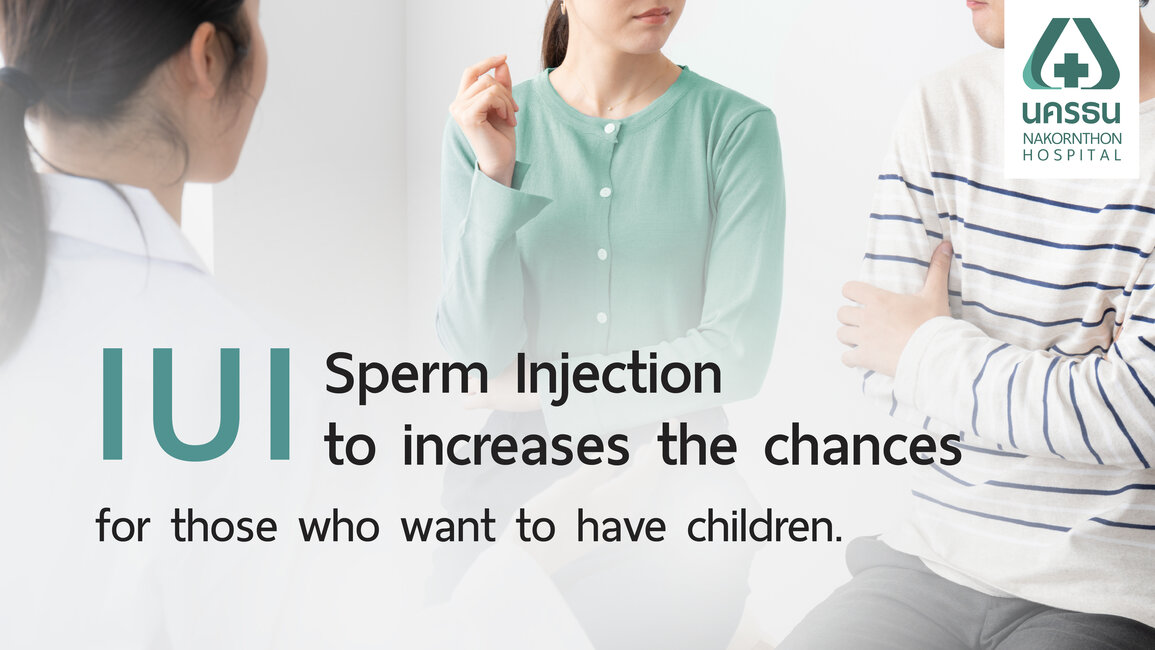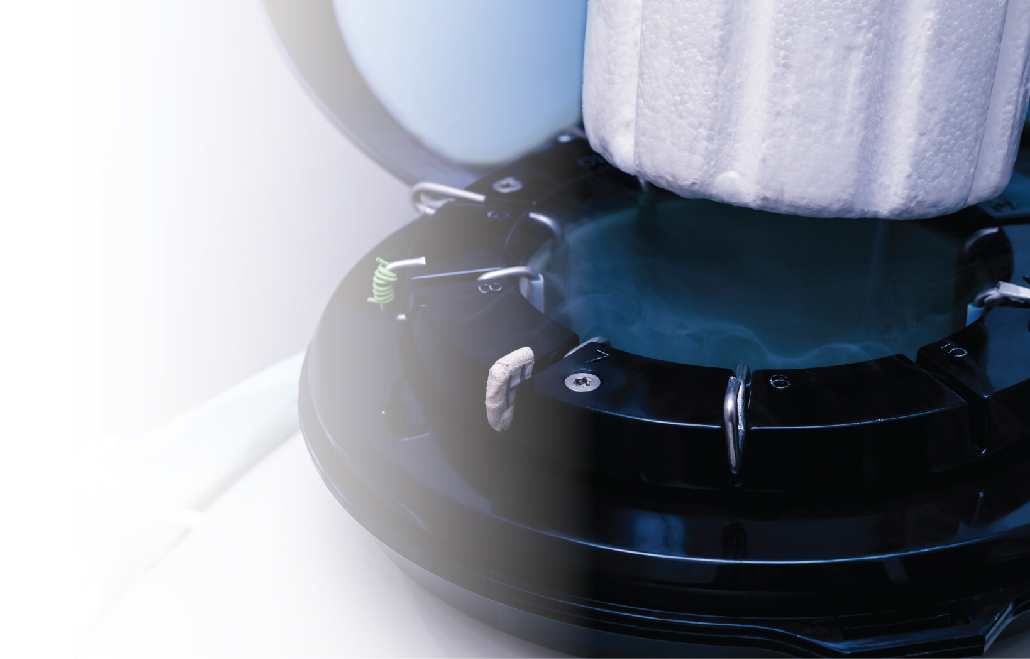IUI: Treating Infertility and Increasing the Chances of Conception
Center : Nakornthon Gift Fertility Center

When discussing uncomplicated fertility treatment methods that are both popular and affordable, Intrauterine Insemination (IUI) stands out. This procedure involves injecting sperm directly into the uterus, which increases the chances of success by approximately 10-20% per cycle. Typically, a woman has a menstrual cycle every 28 days, with ovulation occurring around day 14 before the next period. Once an egg is released, it remains viable for only 24 hours, while sperm can survive and wait to fertilize the egg for about 48 hours or 2 days. Couples experiencing infertility issues often pay close attention to this method. Let's delve deeper into IUI fertility treatment.
Table of Contents
- What is IUI?
- How does IUI differ from normal sexual intercourse?
- Pre-treatment guidelines
- Preparing for IUI: The woman's perspective
- Preparing sperm for IUI: The man's perspective
- Steps for injecting sperm into the uterus
- Post-IUI care
- Who is a suitable candidate for IUI infertility treatment?
- What are the chances of success?
- How many times can IUI be performed?
- Free Online Consultation with a Specialist
What is IUI?
IUI is a fertility treatment that involves injecting sperm directly into the uterus during a woman’s ovulation period. The sperm is prepared by selecting only the viable and motile sperm, which is then injected into the uterus. This method is particularly popular among couples with mild fertility issues. If the sperm concentration is low, the natural pregnancy rate tends to decrease, necessitating sperm preparation. This process involves washing out bacteria and other secretions, leaving only strong and concentrated sperm to be injected into the uterus, thereby increasing the chances of fertilization.
How does IUI differ from normal sexual intercourse?
During natural intercourse, the ejaculated sperm is deposited in the vagina and must swim through the cervix into the uterus. However, the cervix is small, contains mucus, and the acidic environment in the vagina creates obstacles, resulting in only a few sperm making it into the uterus. In contrast, IUI directly injects sperm into the uterus, allowing more high-quality sperm to reach the egg compared to natural intercourse.
Pre-treatment guidelines
In the initial stage, the couple undergoing treatment must be legally married (with a marriage certificate) and will undergo a medical history review, physical examination, and blood tests by a doctor to determine if they are suitable and ready for IUI. The basic criteria include:
- For the woman: Ideally under 35-40 years old, with a normal uterus and fallopian tubes.
- For the man: Should have normal sperm parameters, such as a sperm count of over 10 million, good motility, and a normal percentage of live sperm.

Preparing for IUI: The woman's perspective
For IUI, the doctor will stimulate the ovaries to develop multiple follicles during that menstrual cycle using injectable or oral medications. Afterward, ultrasound appointments will be scheduled to monitor the size and number of follicles and the thickness of the uterine lining. When the follicles reach an appropriate size, the doctor will administer a trigger shot to induce ovulation. Ovulation typically occurs about 36-40 hours later, and the doctor will schedule the sperm injection on the day of ovulation. In total, there are usually only three appointments per cycle. If any abnormalities are found, the doctor may address them to increase the chances of a successful pregnancy.
Preparing sperm for IUI: The man's perspective
The man should get enough sleep, avoid stress, refrain from smoking and alcohol, eat a balanced diet, and take vitamin supplements. He should abstain from sexual activity for 2-7 days before the sperm collection appointment and must visit the doctor on the scheduled IUI day to provide a sperm sample. The doctor and the team will then filter the sperm, selecting only the live and strong ones for injection into the uterus. This preparation process takes about 1-2 hours.
Steps for injecting sperm into the uterus
Once the sperm is prepared, the sperm will be injected into the uterus (Intrauterine Insemination) using a small tube inserted through the woman's cervix. This process takes only 5-10 minutes and is painless. After the procedure, the woman will rest on a bed for about 30 minutes and can then go home. A follow-up appointment will be scheduled two weeks later to test for pregnancy.
Post-IUI care
After IUI, the woman can continue her normal activities and lifestyle. Approximately two weeks after the sperm injection, a pregnancy test will be conducted.
Who is a suitable candidate for IUI infertility treatment?
The Man:
- Must have normal sperm parameters, such as a sufficient quantity, good motility, and normal morphology.
- Must be able to collect a sperm sample on his own.
The Woman:
- Must have at least one normal fallopian tube. If only one tube is functioning, the success rate may be lower since ovulation might occur on the side where the tube is blocked, preventing the egg from traveling down the tube.
- Should not be older than 40 years.
- Should not have severe cervical issues, as this can make the injection difficult and painful, reducing the chances of success.
- Must have a normal uterus and uterine lining thickness to allow embryo implantation
What are the chances of success?
Injecting sperm into the uterus is one of the most popular and widely used methods because it is simple, not overly complicated, and relatively inexpensive. The success rate per cycle is approximately 10-20%. Typically, this method is successful within 4-6 treatment cycles. However, if unsuccessful, further evaluation of the cause or consideration of alternative treatment methods may be necessary.
How many times can IUI be performed?
Undergoing multiple IUI cycles can increase the success rate, with most successes occurring within 3-4 attempts. Generally, after six cycles, the success rate plateaus, neither increasing nor decreasing. Doctors typically recommend 3-6 cycles, but the final decision depends on the patient's preferences and the underlying cause of infertility.
In summary, Intrauterine Insemination (IUI) is an effective and efficient initial treatment for infertility with relatively low costs. Key factors for success include a normal uterus, healthy ovaries and eggs, functional fallopian tubes, and normal sperm, as well as treatment by a specialist, which can significantly increase the chances of achieving the desired pregnancy.
Free Online Consultation
Article of Nakornthon Gift Fertility Center
Infertility: A Common Reproductive Issue That Can Prevent Pregnancy
Embryo Chromosome Screening Using NGS: A Technique for Detecting Fetal Abnormalities Before Pregnancy





